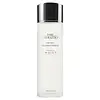What's inside
What's inside
 Key Ingredients
Key Ingredients

 Benefits
Benefits

 Concerns
Concerns

No concerns
 Ingredients Side-by-side
Ingredients Side-by-side

Saccharomyces Ferment Filtrate
HumectantBifida Ferment Lysate
Skin ConditioningWater
Skin ConditioningDiethoxyethyl Succinate
SolventNiacinamide
SmoothingHordeum Vulgare Extract
EmollientCassia Alata Leaf Extract
AstringentGlycerin
HumectantDipropylene Glycol
HumectantDimethicone
EmollientPolyquaternium-51
Skin Conditioning1,2-Hexanediol
Skin ConditioningAdenosine
Skin ConditioningLecithin
EmollientLactic Acid
BufferingAcetic Acid
BufferingPhenoxyethanol
PreservativePotassium Sorbate
PreservativeSaccharomyces Ferment Filtrate, Bifida Ferment Lysate, Water, Diethoxyethyl Succinate, Niacinamide, Hordeum Vulgare Extract, Cassia Alata Leaf Extract, Glycerin, Dipropylene Glycol, Dimethicone, Polyquaternium-51, 1,2-Hexanediol, Adenosine, Lecithin, Lactic Acid, Acetic Acid, Phenoxyethanol, Potassium Sorbate
Water
Skin ConditioningBifida Ferment Lysate
Skin ConditioningPropanediol
SolventButylene Glycol
HumectantLactobacillus Ferment
Skin ConditioningOryza Sativa Lees Extract
Skin ConditioningPrunus Lannesiana Flower Extract
Skin ConditioningAlgae Extract
EmollientLaminaria Saccharina Extract
Skin ProtectingAcetyl Hexapeptide-8
HumectantAcetyl Glucosamine
Skin ConditioningSodium Hyaluronate
HumectantAnthemis Nobilis Flower Extract
MaskingCaffeine
Skin ConditioningDipotassium Glycyrrhizate
HumectantBetaine
HumectantMaltodextrin
AbsorbentCarbomer
Emulsion StabilisingTromethamine
BufferingCitric Acid
BufferingTrehalose
HumectantCaprylyl Glycol
EmollientPentylene Glycol
Skin ConditioningPEG-75
HumectantPPG-5-Ceteth-20
EmulsifyingDisodium EDTA
Sodium Citrate
BufferingPhenoxyethanol
PreservativePotassium Sorbate
PreservativeWater, Bifida Ferment Lysate, Propanediol, Butylene Glycol, Lactobacillus Ferment, Oryza Sativa Lees Extract, Prunus Lannesiana Flower Extract, Algae Extract, Laminaria Saccharina Extract, Acetyl Hexapeptide-8, Acetyl Glucosamine, Sodium Hyaluronate, Anthemis Nobilis Flower Extract, Caffeine, Dipotassium Glycyrrhizate, Betaine, Maltodextrin, Carbomer, Tromethamine, Citric Acid, Trehalose, Caprylyl Glycol, Pentylene Glycol, PEG-75, PPG-5-Ceteth-20, Disodium EDTA, Sodium Citrate, Phenoxyethanol, Potassium Sorbate
 Reviews
Reviews

Ingredients Explained
These ingredients are found in both products.
Ingredients higher up in an ingredient list are typically present in a larger amount.
Bifida Ferment Lysate is derived from the fermentation of Bifida bacteria (often with dairy). It is a probiotic and helps to strengthen our skin's microbiome.
Having a healthy microbiome helps protect our skin against infection. It also helps our skin stay hydrated and healthy.
Studies also show this ingredient to be a promising soothing ingredient for sensitive skin.
Learn more about Bifida Ferment LysatePhenoxyethanol is a preservative that has germicide, antimicrobial, and aromatic properties. Studies show that phenoxyethanol can prevent microbial growth. By itself, it has a scent that is similar to that of a rose.
It's often used in formulations along with Caprylyl Glycol to preserve the shelf life of products.
Potassium Sorbate is a preservative used to prevent yeast and mold in products. It is commonly found in both cosmetic and food products.
This ingredient comes from potassium salt derived from sorbic acid. Sorbic acid is a natural antibiotic and effective against fungus.
Both potassium sorbate and sorbic acid can be found in baked goods, cheeses, dried meats, dried fruit, ice cream, pickles, wine, yogurt, and more.
You'll often find this ingredient used with other preservatives.
Learn more about Potassium SorbateWater. It's the most common cosmetic ingredient of all. You'll usually see it at the top of ingredient lists, meaning that it makes up the largest part of the product.
So why is it so popular? Water most often acts as a solvent - this means that it helps dissolve other ingredients into the formulation.
You'll also recognize water as that liquid we all need to stay alive. If you see this, drink a glass of water. Stay hydrated!
Learn more about Water